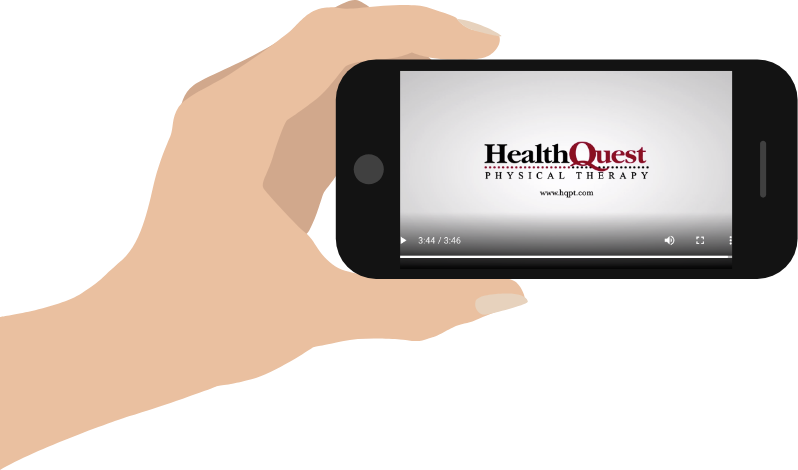Jaw
Physical therapy for jaw pain
We know that physical therapists treat the musculoskeletal system – bones, joints, and muscles. So that includes knees, backs, shoulders . . . and jaws! The Temporomandibular joint (TMJ) is the hinge joint immediately in front of the ear on each side that connects the lower jaw (mandible) to the temporal bone of the skull. It is used constantly and consistently throughout the day. In fact, it is the most used joint in your body! Temporomandibular joint disorder (or dysfunction), or TMD, is a condition that limits the natural functions of the jaw, such as opening the mouth and chewing. TMD affects more women than men and is most often diagnosed in individuals aged 20 to 40 years. Its causes a range of problems from poor posture, chronic jaw clenching, and poor teeth alignment, to fractures or conditions such as lockjaw, where the muscles around the jaw spasm and reduce the ability of the mouth to open. Physical therapists help people with TMD ease pain, regain normal jaw movement, and lessen daily stress on the jaw.
The temporomandibular joint connects the jaw to the skull. If there is an injury to this joint or it becomes damaged in any way, TMJ dysfunction may develop. It’s important to realize that the temporomandibular joint is a complex and important structure comprised of bones, tendons, and muscles that may cause you to feel pain on one or both sides of the jaw. Our HealthQuest physical therapists will help you ease pain, regain normal jaw movement, and lessen daily stress on the jaw.
How Is TMD Diagnosed?
To identify the cause of your symptoms, your physical therapist will:
- Review your medical history, and discuss any previous surgery, fractures, or other injuries to your head, neck, or jaw.
- Ask you to describe your pain, including headaches, and observe any pain patterns in the neck and TMJ.
- Conduct a physical examination of your jaw and neck, including the soft tissue and muscles in the area.
Your physical therapist will evaluate your posture and observe how your cervical spine—the upper portion of your spine, situated in your neck—moves. Your physical therapist will examine your TMJ to find out how well it functions and whether there are any abnormalities in your jaw motion.
How Can a Physical Therapist Help?
Your physical therapist can help you restore the natural movement of your jaw and decrease your pain. Based on your condition, your therapist will select treatments that will work best for you. Your treatments may include:
Posture Education. If you sit with your head in an increased forward position, you are placing a greater strain on the muscles beneath your chin, causing the lower jaw to pull back and the mouth to be in an open position even when resting, increasing stress on the TMJ. You also might be overworking the jaw muscles to force the jaw closed so your mouth isn’t open all the time. Your physical therapist will teach you to be aware of your posture so that you can improve the resting position of your jaw, head, neck, breastbone, and shoulder blades when you’re sitting and walking.
Improving Jaw Movement. Physical therapists use skilled hands-on techniques (manual therapy) to gently increase movement and relieve pain in tissues and joints. Your physical therapist may use manual therapy to stretch the jaw in order to restore normal joint and muscle flexibility or break up scar tissues (“adhesions”) that sometimes develop when there is constant injury.
Your physical therapist will teach you special “low-load” exercises that don’t exert a lot of pressure on your TMJ, but can strengthen the muscles of the jaw and restore a more natural, pain-free motion.
Special Pain Treatments. If your pain is severe, your physical therapist may provide treatments, such as electrical stimulation or ultrasound to reduce it.
Referral to a Dentist. If your TMD is caused by teeth alignment problems, your physical therapist can refer you to a dentist who specializes in TMD, who can correct the alignment with special appliances, such as “bite guards” that create a natural resting position to relax the TMJ, relieve pain, and improve jaw function. We have a large referral source bank and we can make great recommendations on a dentist or specialist if you need one.
40+ CONVENIENT LOCATIONS
GOALS & STRATEGIES
for treating your jaw
eliminate/reduce
pain & swelling
improved
mobility & flexibility
proper
alignment
education & preventative tools
increased
strength & endurance
return to
normalcy & function
Start Your
journey to health Today
COMMON JAW SYMPTOMS
we can help you with
jaw pain
Difficulty chewing
difficulty yawning
clicking noise/jaw popping
headaches
sore jaw muscles
locking of the jaw
earaches
TREATMENT PLAN
for jaw pain & dysfunction
We treat the individual…not just the pain or dysfunction. Your physical therapy treatment may include:

